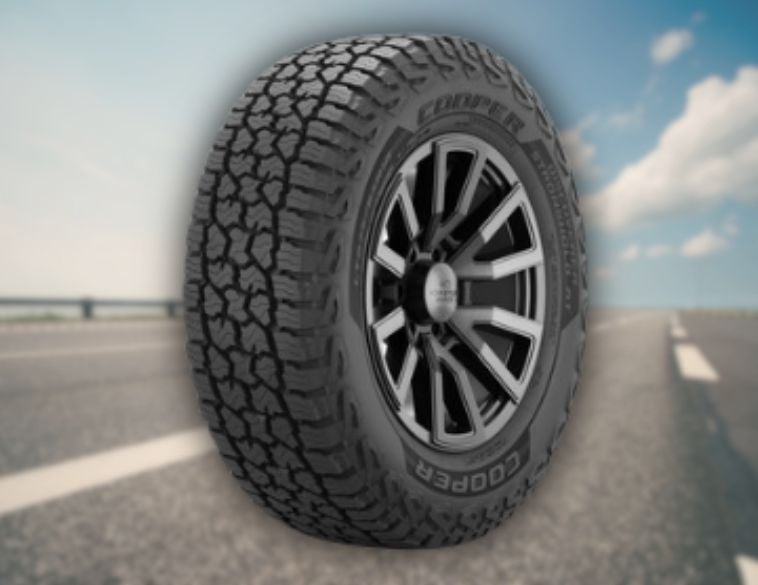Today’s commercial tire market is dealing with economic pressures, as well as changing consumer spending habits.
The commercial tire market moves in tandem with the economy. When people are buying goods, trucks are needed to transport them, and those trucks need tires. When people stop buying goods, the opposite is true.
In 2024, we’re seeing a mixed bag when it comes to demand for new commercial tires. “We are having a very slow start in all markets affected by the economy and construction, which are the main reasons for this situation,” says Robert Vetter, Vice President Sales Eastern Canada, Huayi Tire Canada, adding that our high interest rates are impacting the economy as well.
Agile and adaptable tires
Johnny McIntosh, Senior Director of Commercial Services, The Goodyear Tire & Rubber Company is seeing other challenges too. “The light-duty truck segment is evolving rapidly, driven by continued growth in the e-commerce and last-mile delivery spaces,” he explains. “The vehicles in service—and their tires—are being called upon to do more than ever in a variety of changing environments. As a result, tire manufacturers like Goodyear are responding with agile and adaptable tires and services. Technologically-advanced tires and tire maintenance tools are helping to unlock efficiency, regardless of industry or application.”
Another factor is the age of modern fleets. “We’ve seen that the age of vehicles in service is on the rise, and those vehicles will need extra care and service to keep them running and providing value,” McIntosh adds. “We’ve also noted a lot of crossover between the commercial and consumer space in the light-duty market. Technology in one segment is making its way into the other segment to ensure our customers’ needs are met. For example, some light-duty trucks are now fitted with commercial tires, underscoring the fact that getting the job done is the priority.”
Back to “normal” business
At Bridgestone, Brian Cunningham, Vice President, Fleet Solutions, Bridgestone Mobility Solutions says they’re seeing a return to pre-pandemic sales numbers. “In 2024, our commercial business is experiencing one of the first ‘normal’ years we’ve had in a while,” he explains. “Businesses are still feeling the effects of the pandemic, but the industry is stabilizing and returning to pre-pandemic levels. Fleets have shifted strategy to a more value-oriented model, seeking ways to be more productive and drive efficiency into operations. As a result of this strategy shift, sustainability has become more top of mind.”
Impact of inflation
As for inflation, Cunningham admits that it has affected the industry. “Inflation has undoubtedly had an impact by increasing costs in manufacturing, labour, and transportation,” he says.
Al Eagleson, Segment Manager, Commercial Tires at Sailun Tire Americas agrees. “The trucking industry is starting to show the impact of inflation recently,” he says. “Consumers are watching their spending, which lessens the purchase of goods that travel on trucks.”
Jenny Rodriguez, Market Planning Manager, Commercial at Yokohama Tire Canada notes other issues facing the commercial tire space. “Manufacturers and distributors are maintaining elevated inventory levels, since demand is flat or slightly down vs. last year in certain applications,” she says. “Fleets have many tire options to choose from, so they do not need to buy in large quantities. Fleet managers need to plan and budget more effectively, so they buy the best cost benefit tires for their specific applications and current needs.”
Rodriguez acknowledges the pressure many fleets are facing today. “Increasing fuel prices, high interest rates, maintenance and insurance costs, among other factors put pressure on purchasing power,” she adds. “Profit margins are getting tighter, since the market is demanding faster deliveries for smaller quantities. Price-driven decision making from fleets makes the tire market highly competitive.”
Cost-cutting measures
Naturally, fleet owners are looking for ways to cut their costs, including their tire spend. But are less expensive tires always the best option?
“In the short term, less expensive tires seem like a good way to cut costs for some fleets,” Rodriguez admits. “Nevertheless, even under cost pressure, most fleets understand that top performer tires that consistently deliver more miles between replacement, provide fuel savings, and maintain a high level of safety on the road are key to optimizing their investment, and avoiding high operating costs in the long run.”
Huayi Tire’s Vetter notes that some fleet operators may not be looking at the price equation correctly. “Like any profitable business, commercial fleets have always controlled their operating expenses to the lowest possible level,” he says. “Tire costs are one of the first expenses that affect their expenses. Yes, they are looking for lower-cost, higher-performing tires today, but they are not considering a lower cost-per-mile, which will come back later and affect their cost of operation in the long term.”
Sailun’s Eagleson notes that many fleet operators talk about tires that can help them save on fuel, “but fuel costs are more difficult to measure than tire costs. We can prove our tires provide lower fuel costs when we test on a track. It is a lot more difficult to prove to a fleet, unless they have a strong program in place to measure fuel. There are also a lot more factors that come into play in the real world compared to testing in a controlled environment.”
Bridgestone’s Cunningham makes a strong case for investing in quality tires. “We have seen less expensive products make their way into the market, but the largest commercial fleets in North America continue to invest in premium tires, which are the better long-term investment,” he concludes. “When fleets purchase a premium tire with a premium casing, they can retread the tire up to three times or more, lowering their total cost of ownership threefold without sacrificing performance. This approach not only helps businesses maximize their investment, but also contributes to the sustainability of the industry.”






 LAVAL
LAVAL Full time
Full time


